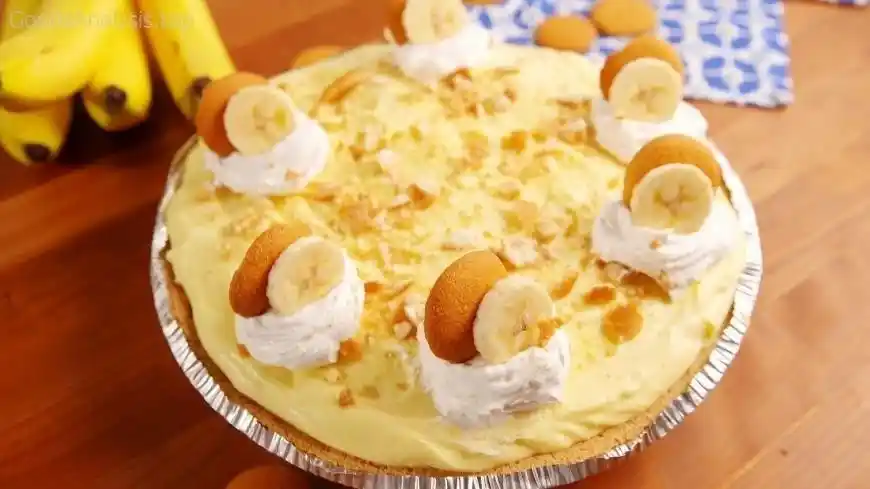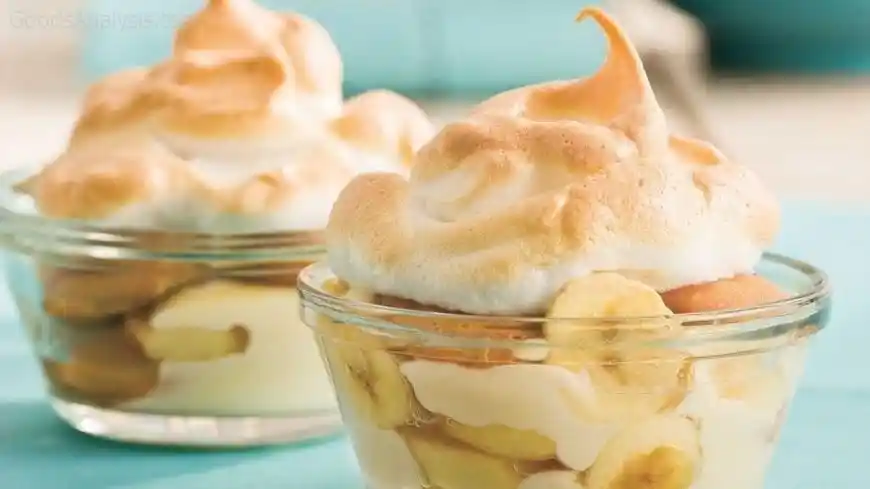Banana pudding is one of those classic desserts that has managed to remain a staple in homes, restaurants, and family gatherings for generations. It’s simple, comforting, and beloved by many. But as with any popular dish, there’s a lot more to consider than just its irresistible taste. Whether you’re making banana pudding for the first time or you’re a seasoned pro, understanding both the appeal and the potential pitfalls of this treat will help you make the best pudding possible.
What is Banana Pudding?
Banana pudding is a dessert made of layers of vanilla pudding, banana slices, and cookies, usually vanilla wafers. The dish is topped with whipped cream or meringue, and often chilled for several hours to let the flavors meld together. The dish has roots in Southern American cuisine and is a go-to comfort food in many households.
At first glance, banana pudding seems straightforward — bananas, pudding, cookies, and cream — and indeed, the recipe is simple enough. However, as any seasoned cook knows, it’s the small details that make a world of difference. So let’s break it down and look at how to create the perfect banana pudding, along with some crucial insights about the dish, its ingredients, and what to keep in mind.
Key Ingredients and Their Impact
Bananas: Naturally, bananas are the star of the show. When selecting bananas for banana pudding, go for slightly ripe but firm bananas. Overripe bananas tend to get mushy too quickly and lose their flavor when combined with the pudding. On the other hand, under-ripe bananas are too firm and lack the sweetness needed to balance the dessert’s richness. The trick is finding that perfect sweet spot.
Pudding: While you can make homemade vanilla pudding from scratch, many people prefer to use a pre-made instant vanilla pudding mix. If you’re going the homemade route, be sure to cook it low and slow to avoid any lumps. It’s essential to let the pudding cool completely before layering it to prevent it from turning into a soggy mess.
Cookies: The most common choice for banana pudding is Nilla Wafers. These small, sweet cookies absorb just enough of the pudding without becoming overly soggy. However, other cookie options like shortbread or graham crackers can work as substitutes, offering a different texture and flavor.
Whipped Cream or Meringue: Topping banana pudding with either whipped cream or meringue adds a light, fluffy texture that contrasts nicely with the richness of the pudding and bananas. Whipped cream is quicker and easier to prepare, while meringue requires more effort but adds a delightful sweet crunch when baked.
The Best Way to Make Banana Pudding
- Prepare the pudding: Whether you’re using an instant mix or making it from scratch, the first step is to get the pudding ready. For instant pudding, you just mix the powder with milk and let it set in the fridge for a few minutes. If you’re making it from scratch, you’ll need to cook it over low heat until it thickens.
- Slice the bananas: As mentioned, opt for bananas that are ripe but not mushy. Slice them into 1/4-inch thick rounds.
- Layer it: Start by layering your dish with a few cookies. Add a layer of sliced bananas, followed by a layer of pudding. Repeat the process until your dish is filled.
- Topping: Whipped cream is the easiest option for a quick and delicious topping. If you want to add a bit more flair, you can make meringue. Spread it over the top, and then bake until golden brown.
- Chill: Banana pudding needs time to set. Once assembled, refrigerate it for at least 2-3 hours or even overnight. This allows the cookies to soften and the flavors to meld.

Potential Pitfalls (And How to Avoid Them)
Now, no dish is without its potential pitfalls, and banana pudding is no exception. While it may seem easy to make, there are a few things you should watch out for:
Soggy Cookies: The biggest complaint about banana pudding is when the cookies get too soggy. This is typically the result of layering the cookies in too early or not chilling the pudding long enough. If you prefer your cookies to stay firmer, you can add them just before serving, or even try using sturdier cookies that won’t soften as quickly.
Bananas Turning Brown: Bananas oxidize quickly when exposed to air, turning brown within hours of slicing. While this doesn’t affect the taste, it does affect the appearance. To slow down this process, toss your banana slices with a bit of lemon juice or even lime juice. Just don’t go overboard, as too much citrus can alter the flavor.
Too Much Pudding: It’s easy to get carried away with the pudding when layering, but too much pudding can result in a soupy, overly thick dessert. The key is to have equal layers of pudding, bananas, and cookies for a balanced consistency.
Pudding that’s too runny: If you’re making homemade pudding, make sure you cook it properly so it thickens. Sometimes, instant pudding doesn’t set correctly if it’s not allowed to rest long enough.
Health Considerations
As delicious as banana pudding is, it’s certainly not the healthiest dessert around. It’s packed with sugar, refined carbs, and calories. A standard serving of banana pudding can contain around 300-400 calories, depending on the ingredients used. For those watching their sugar intake or managing certain health conditions like diabetes or heart disease, this is something to be mindful of.
However, don’t let that discourage you from indulging once in a while. If you want to make a healthier version of banana pudding, here are some options:
- Use sugar-free pudding mix or make your own from scratch using natural sweeteners like stevia or monk fruit.
- Try dairy-free options if you’re lactose intolerant. Coconut milk, almond milk, or oat milk can all serve as alternatives.
- Whole grain or low-sugar cookies can reduce the carb count while still offering that satisfying crunch.

As always, if you have specific dietary concerns or health conditions, it’s best to consult a nutritionist or healthcare provider.
Real Opinions on Banana Pudding
Here’s what a few people from different backgrounds think about banana pudding:
- John (50, USA): “Banana pudding is a family favorite at every holiday gathering. I grew up eating it at my grandmother’s house, and now I make it for my own kids. The secret is in the pudding — homemade is always better. Instant pudding just can’t compare.”
- Ruth (62, UK): “I first tried banana pudding on a visit to the U.S. years ago, and I’ve been hooked ever since. I tend to make a lighter version with sugar-free pudding and coconut cream to keep it a bit healthier, but the flavor is still amazing.”
- Miguel (34, Mexico): “I didn’t grow up with banana pudding, but my wife made it once for a family event, and I couldn’t stop eating it. I’ve had it a few times since, but I find it a bit sweet for my taste. Still, I can appreciate the texture and flavor.”
- Amina (29, Nigeria): “I prefer my banana pudding to have a bit more spice. A little cinnamon or nutmeg can really elevate the flavor. It’s a good dessert, though I rarely make it — too many calories!”
- Yuki (22, Japan): “Banana pudding is new to me, and I’m intrigued. I like the idea of layering different textures, but the idea of meringue seems strange. Maybe I’ll try making it next time with less sugar.”
Final Thoughts
Banana pudding is a beloved dessert that brings together simple ingredients for a deliciously nostalgic treat. While it’s not the healthiest option, it can be adapted for different tastes and dietary preferences. As with any dish, the key is balance — balance in texture, flavor, and portion size. If you take the time to make the pudding carefully, keep an eye on the details, and adapt it to your needs, you’ll have a dessert that’s both satisfying and memorable.
Enjoy, and don’t forget to share your banana pudding with friends and family — after all, it’s a dish that’s best enjoyed together!









